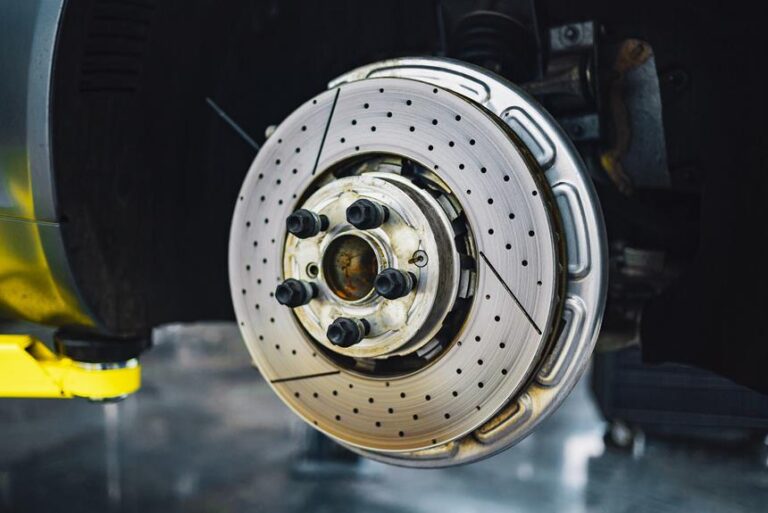Studded Winter Tires: Is It Worth It
Are studded winter tires worth the investment?
As the cold weather approaches, drivers face the challenge of navigating icy and snowy roads. Studded winter tires have gained popularity for their ability to enhance traction, improve braking performance, and increase safety in wintry conditions.
However, before making a decision, it is essential to weigh the benefits against potential drawbacks.
In this article, we will explore the advantages and considerations of studded winter tires, empowering you to make an informed choice and enjoy the freedom of driving with confidence.
Key Takeaways
- Studded winter tires provide enhanced traction and stability on icy and snowy surfaces.
- Metal studs penetrate into the ice, providing additional grip and reducing the risk of skidding.
- Alternative technologies and advancements in vehicle stability control systems offer potential solutions.
- Studded winter tires offer increased safety in snowy conditions, reducing braking distance and improving stability and control.
The Benefits of Studded Winter Tires
What are the specific advantages of using studded winter tires in icy and snowy conditions?
When it comes to driving in hazardous winter conditions, studded winter tires have long been hailed as the go-to solution for enhanced traction and improved safety. The effectiveness of studded tires lies in their ability to grip icy and snowy surfaces more effectively than their non-studded counterparts. The metal studs embedded in the tire tread penetrate into the icy surface, providing additional grip and stability. This allows for better handling and control, reducing the risk of skidding and accidents on treacherous roads.
While there are alternatives to studded tires, such as winter tires with advanced rubber compounds or tire chains, studded tires have proven to be the most effective solution for icy and snowy conditions. These alternatives may offer some degree of traction, but they often fall short when compared to the enhanced grip provided by studded tires.
In conclusion, the specific advantages of using studded winter tires in icy and snowy conditions are their unparalleled effectiveness in providing optimal traction and stability. However, it is important to consider local regulations and restrictions regarding studded tires, as they may be prohibited or have specific usage guidelines.
Transitioning into the subsequent section, let's now delve into the topic of enhanced traction on icy roads and how studded tires contribute to this crucial aspect of winter driving safety.
Enhanced Traction on Icy Roads
To ensure optimal safety on icy roads, it is crucial to explore various strategies and technologies that can provide enhanced traction and stability. Winter driving safety is a top concern for many drivers, especially in regions where freezing temperatures and icy conditions are common. Improved grip on icy roads can significantly reduce the risk of accidents and help drivers maintain control of their vehicles.
One strategy that has been widely discussed is the use of studded winter tires. Studded tires are equipped with metal studs embedded in the tread, which can dig into the ice and provide additional traction. These studs enhance the tire's ability to grip the road, improving stability and reducing the likelihood of skidding or sliding.
While studded tires can be effective on icy roads, it is important to consider the potential drawbacks. Studded tires can be noisy and may cause increased wear on the road surface. Additionally, some regions have restrictions on the use of studded tires due to their impact on road conditions.
It is worth noting that there are alternative technologies available to improve traction on icy roads. For example, some winter tires are designed with specialized rubber compounds that remain flexible in cold temperatures, providing improved grip on icy surfaces. Additionally, advancements in vehicle stability control systems and anti-lock braking systems can also contribute to enhanced traction and stability.
Improved Braking Performance
Advancements in brake technology have significantly contributed to improved braking performance, ensuring greater safety on icy roads. With the constant evolution of automotive technology, manufacturers have been able to develop braking systems that provide better control and responsiveness, allowing drivers to navigate slippery conditions with increased confidence.
One key aspect of improved braking performance is enhanced handling and road grip. Modern brake systems are designed to optimize the contact patch between the tires and the road surface, maximizing traction and reducing the likelihood of skidding. This is achieved through various mechanisms, such as anti-lock braking systems (ABS), electronic stability control (ESC), and traction control systems (TCS). These systems work together to monitor wheel speed, vehicle stability, and tire grip, making adjustments as needed to maintain control and prevent loss of traction.
To illustrate the advancements in braking technology, consider the following table:
| Brake Technology | Benefits |
|---|---|
| Anti-lock Brakes | Prevent wheel lock-up during braking |
| Electronic Stability Control | Helps maintain vehicle stability during abrupt maneuvers |
| Traction Control Systems | Maximizes road grip for better traction |
| Brake Assist | Provides additional braking force in emergency situations |
| Electronic Brakeforce Distribution | Distributes braking force evenly among all wheels for improved stability |
Increased Safety in Snowy Conditions
When driving in snowy conditions, increased safety is crucial.
Studded winter tires offer several benefits that contribute to a safer driving experience.
These tires provide improved traction on icy roads, reduce braking distance, and enhance stability and control, allowing drivers to navigate through snow-covered roads with confidence and peace of mind.
Traction on Icy Roads
The effectiveness of studded winter tires in improving traction on icy roads has been a subject of extensive research and debate among automotive experts. Studded tires are designed with metal studs embedded in the tread to enhance grip on slippery surfaces.
Here are three key benefits of studded winter tires:
- Enhanced traction: The metal studs on these tires dig into the ice, providing better grip and stability. This greatly improves the vehicle's ability to accelerate, brake, and turn on icy roads.
- Increased safety: With improved grip, studded winter tires help reduce accidents caused by loss of control and skidding on icy surfaces. They significantly decrease the risk of collisions by enhancing the driver's ability to maintain control of the vehicle.
- Peace of mind: Knowing that your vehicle is equipped with studded winter tires can give you peace of mind when driving in icy conditions. These tires provide added confidence and reassurance, allowing you to focus on the road ahead.
Overall, studded winter tires offer improved traction and reduced accidents, making them a worthwhile investment for those who frequently drive on icy roads.
Reduced Braking Distance
Reduced braking distance is a key factor in ensuring increased safety in snowy conditions. It allows drivers to stop their vehicles more efficiently and effectively. With improved winter driving being a top priority, reducing braking distance can significantly contribute to increased road safety.
In snowy or icy conditions, it can be challenging for vehicles to come to a complete stop due to reduced traction. However, advancements in technology have led to the development of braking systems that are specifically designed to enhance performance in winter conditions.
These systems, such as anti-lock braking systems (ABS) and traction control systems, help to reduce braking distances by preventing wheel lock-up and maximizing grip on slippery surfaces. By implementing these technologies, drivers can have better control over their vehicles. This results in improved winter driving and ultimately, increased road safety.
Enhanced Stability and Control
With the implementation of enhanced stability and control features, drivers can experience improved maneuverability and increased safety on snowy roads. Winter driving conditions can be challenging, but advancements in vehicle technology have made it easier for drivers to navigate through icy and slippery roads.
Here are three features that contribute to improved handling and winter driving safety:
- Traction control systems: These systems monitor wheel spin and automatically apply the brakes to individual wheels, helping to maintain traction and prevent skidding.
- Electronic stability control: This feature helps to stabilize the vehicle by automatically applying the brakes and adjusting engine output when it detects a loss of control, reducing the risk of a spin-out.
- All-wheel drive: Vehicles equipped with all-wheel drive distribute power to all four wheels, providing better traction and control in slippery conditions.
Reduced Risk of Sliding and Skidding
Winter drivers can greatly benefit from the increased traction and stability offered by studded tires, minimizing the risk of sliding and skidding on icy or snowy roads. These specialized tires are designed with metal studs embedded in the tread, which provides additional grip on slippery surfaces. This enhanced traction helps to reduce the risk of accidents and improves overall winter driving safety.
When driving on icy or snow-covered roads, the risk of accidents is significantly higher due to reduced friction between the tires and the road surface. Studded tires help to counteract this by biting into the ice and providing better grip. This increased traction allows drivers to maintain better control of their vehicles, reducing the likelihood of sliding or skidding in hazardous conditions.
Furthermore, studded tires can make a significant difference in braking distance. The metal studs create a rougher surface between the tire and the road, which increases friction and improves stopping power. This can be especially crucial in emergency situations where quick and effective braking is essential.
However, it's important to note that studded tires are not without drawbacks. In the next section, we will discuss the longevity and durability of studded tires, as well as their impact on road surfaces.
Longevity and Durability of Studded Tires
When considering studded tires, it is important to assess their longevity and durability.
Studded tires typically have a lifespan of 20,000 to 25,000 miles, depending on the driving conditions and maintenance.
While they excel in providing traction on icy and snowy roads, their effectiveness can diminish as the studs wear down over time.
Additionally, studded tires tend to be more expensive than their non-studded counterparts, so it is crucial to weigh their cost-effectiveness over the long run.
Studded Tire Lifespan
Regularly maintaining and inspecting studded tires throughout the winter season is essential for maximizing their lifespan and ensuring optimal performance on icy road conditions. Here are three important aspects of studded tire maintenance that can help enhance their performance and longevity:
- Rotation and Balance: Regularly rotating and balancing your studded tires helps distribute the wear evenly, preventing uneven tread wear and ensuring better traction on icy roads.
- Pressure Check: Monitoring the tire pressure is crucial to maintain the correct balance between grip and performance. Underinflated tires can reduce handling and increase the risk of tire damage, while overinflated tires may result in reduced traction.
- Tread Depth Inspection: Regularly checking the tread depth of your studded tires is essential. As the tread wears down, the tires' ability to grip the road diminishes. Replace your studded tires when the tread depth reaches the recommended minimum.
Performance in Harsh Conditions
To ensure optimal performance in harsh conditions, it is crucial to assess the longevity and durability of studded tires. Winter tire effectiveness is a topic of great importance for those who drive in regions with extreme weather conditions.
Studded tires have long been considered the go-to choice for maximum traction on icy and snowy roads. However, with advancements in tire technology, studless tires have emerged as a viable alternative. The performance comparison between studded and studless tires is a matter of debate among drivers.
While studded tires offer superior grip on icy surfaces, they may be less effective on dry or wet roads. On the other hand, studless tires provide better traction on a variety of road conditions, but they may not perform as well on pure ice.
Ultimately, the choice between studded and studless tires depends on the specific needs and preferences of the driver.
Cost-Effectiveness Over Time
One important factor to consider when deciding between studded and studless winter tires is their cost-effectiveness over time, as the longevity and durability of studded tires may impact their overall value. While studded tires offer excellent traction on icy roads, they come with certain drawbacks that can affect their long-term savings.
Here are three key points to consider:
- Expense: Studded tires tend to be more expensive upfront compared to their studless counterparts. The cost of purchasing and installing studded tires can add up, especially if you need to replace them frequently.
- Maintenance: Studded tires require regular maintenance to ensure optimal performance. The studs can wear down over time, necessitating replacements, which can be an additional expense.
- Wear and Tear: Studded tires can cause increased wear on roads, particularly during non-winter months. This can lead to costly repairs and maintenance for both your vehicle and the roads themselves.
When weighing the cost vs. benefits, considering long-term savings is crucial. It is essential to evaluate your specific driving needs and conditions to determine the most cost-effective choice for your winter tire selection.
Potential Drawbacks of Studded Winter Tires
While studded winter tires can provide enhanced traction on icy roads, it is important to consider the potential drawbacks associated with their use. These drawbacks include potential damage to the road surface and increased road noise.
Studded winter tires are designed with metal studs embedded in the tread to provide better grip on icy surfaces. However, these studs can cause damage to the road, especially in areas with softer asphalt. The repeated impact of the studs can lead to cracks and potholes, requiring costly repairs for the municipalities.
Another disadvantage of studded winter tires is the increased road noise they produce. The metal studs create a distinctive sound when they come into contact with the road surface, which can be bothersome for both the driver and nearby residents. This noise can be particularly pronounced on dry pavement, as the studs are not necessary for traction in those conditions.
To help visualize the potential drawbacks of studded winter tires, the following table illustrates their impact on road damage and road noise:
| Potential Drawbacks | Studded Winter Tires |
|---|---|
| Potential Damage | Increased |
| Road Noise | Higher |
Making an Informed Decision: Factors to Consider
When considering whether to invest in studded winter tires, drivers should carefully evaluate factors such as road damage and road noise. Studded tires, which feature metal studs embedded in the tread, offer enhanced traction on icy and snowy roads. However, they also come with a few drawbacks that drivers should consider:
- Road Damage: Studded tires can cause wear and tear on the road surface. The metal studs can chip away at the pavement, leading to increased maintenance costs for municipalities. This factor is particularly significant in areas with mild winters, where the use of studded tires may be less justified.
- Road Noise: Studded tires are known for the distinctive noise they create while driving on dry pavement. The constant clicking sound can be bothersome to both the driver and passengers, compromising the comfort of the ride.
- Limited Effectiveness: While studded tires provide excellent traction on ice, their performance on other winter road conditions, such as slush or dry roads, is not significantly better than non-studded winter tires. Therefore, drivers should consider whether the added benefits on ice outweigh the drawbacks on other road surfaces.
Frequently Asked Questions
How Do Studded Winter Tires Compare to Studless Winter Tires in Terms of Performance on Icy Roads?
In terms of performance on icy roads, studded winter tires generally provide better traction compared to studless winter tires. The added traction of studded tires can enhance safety by improving grip and reducing the risk of sliding or losing control.
Can Studded Winter Tires Damage the Road Surface?
Studded winter tires, while effective on icy roads, can potentially damage the road surface due to the metal studs. This presents a con in terms of infrastructure maintenance, but it is important to weigh the pros and cons along with the environmental impact.
Are Studded Winter Tires Suitable for All Types of Vehicles?
Studded winter tires are suitable for all types of vehicles as they provide significant safety benefits, such as improved traction on icy roads. However, their use may have a negative environmental impact due to increased road surface wear.
Do Studded Winter Tires Affect Fuel Efficiency?
Studded winter tires can have a negative impact on fuel efficiency due to their increased rolling resistance. However, the improved vehicle handling they provide in icy conditions may outweigh the slight decrease in fuel economy. Additionally, studded tires have a minimal environmental impact compared to other winter driving alternatives.
How Often Should Studded Winter Tires Be Replaced?
Studded winter tires should be replaced when the tread depth reaches 6/32 inch or less. It is important to consider the pros and cons of using studded winter tires, such as improved traction on ice but potential damage to road surfaces.
Conclusion
After considering the benefits and drawbacks of studded winter tires, it is clear that investing in them is worth it.
The enhanced traction, improved braking performance, and increased safety they provide outweigh any potential drawbacks.
Additionally, their longevity and durability make them a reliable choice for harsh winter conditions.
Ultimately, studded winter tires offer a significant advantage in snowy and icy conditions, ensuring a safer and more secure driving experience.
Don't compromise on safety when it comes to winter driving – choose studded tires.







